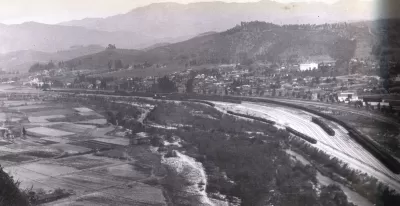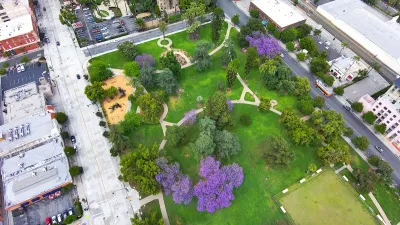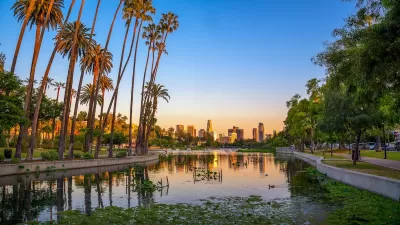River LA has launched a capital campaign to develop the 100-acre Taylor Yard Park, featuring amenities like a welcome pavilion, wetlands, and a pedestrian bridge, with completion costs estimated at over $1 billion.

River LA, a nonprofit organization, has initiated a capital campaign to develop 100 acres of parkland at the former Taylor Yard site, making it the largest park to be created in Los Angeles since Griffith Park. Known as the 100 Acre Partnership, the project involves collaboration between the City of Los Angeles, the State Parks Department, and the Mountains Recreation and Conservation Authority. The park will feature a range of amenities, including the Paseo del Rio Greenway, a Welcome Pavilion, and a Pedestrian & Wildlife Bridge, with construction set to begin in 2025.
Key elements of the park include the Turntable, a gathering space created from the former rail yard’s turntable, and a River Overlook offering scenic views. Additionally, the project aims to develop a wetlands area on the 18-acre Bowtie Parcel. Fundraising efforts, led by River LA board chair Harry B. Chandler, are targeting foundations, corporations, and high-net-worth individuals to support these high-profile park features.
The transformation of Taylor Yard, once a Southern Pacific Railroad freight yard, has been a long-term project involving public open space and housing. The site’s G2 Parcel is considered the "crown jewel" of the L.A. River restoration efforts, but estimates suggest it may take over $1 billion to complete the park’s full development, underscoring the scale and ambition of this landmark project.
FULL STORY: River LA begins fundraising for 100-acre Taylor Yard Park

Planetizen Federal Action Tracker
A weekly monitor of how Trump’s orders and actions are impacting planners and planning in America.

Congressman Proposes Bill to Rename DC Metro “Trump Train”
The Make Autorail Great Again Act would withhold federal funding to the system until the Washington Metropolitan Area Transit Authority (WMATA), rebrands as the Washington Metropolitan Authority for Greater Access (WMAGA).

The Simple Legislative Tool Transforming Vacant Downtowns
In California, Michigan and Georgia, an easy win is bringing dollars — and delight — back to city centers.

Albuquerque’s Microtransit: A Planner’s Answer to Food Access Gaps
New microtransit vans in Albuquerque aim to close food access gaps by linking low-income areas to grocery stores, cutting travel times by 30 percent and offering planners a scalable model for equity-focused transit.

This City Will Pay You to Meet Your Neighbors
A North Kansas City grant program offers up to $400 for residents to throw neighborhood block parties.

Commentary: Our Silence Will Not Protect Us
Keeping our heads down and our language inoffensive is not the right response to the times we’re in. Solidarity and courage is.
Urban Design for Planners 1: Software Tools
This six-course series explores essential urban design concepts using open source software and equips planners with the tools they need to participate fully in the urban design process.
Planning for Universal Design
Learn the tools for implementing Universal Design in planning regulations.
Smith Gee Studio
City of Charlotte
City of Camden Redevelopment Agency
City of Astoria
Transportation Research & Education Center (TREC) at Portland State University
US High Speed Rail Association
City of Camden Redevelopment Agency
Municipality of Princeton (NJ)





























